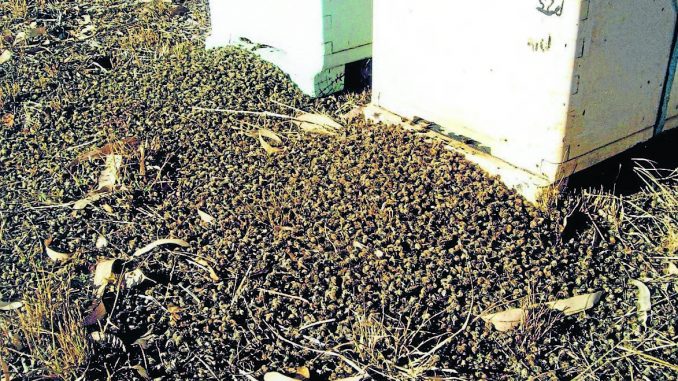By Spy Uganda
Canada: Over 37 million bees were found dead in Canada after GMO corn was planted in the local area.
According to a local beekeeper, Dave Schuit, since the GMO corn was planted close to his farm he lost over 37 million bees as a direct result.
Dave Schuit, a beekeeper who produces honey in Elmwood, Canada, claims that since GMO corn was planted in the nearby area, his farm has lost around 37 million bees (approximately 600 hives). According to reports, Schuit and other local beekeepers believe neonicotinoids, or “neonics” are to blame for the influx of bee deaths.
Imidacloprid and Clothianidin, two of Bayer CropScience’s most widely used pesticide, both contain neonics and have been linked with many large-scale bee ‘die-offs’ in both European and U.S. countries.
However, despite the dangers associated with the use of this chemical, the pesticides are still regularly used and sold on the market.
Despite their size, the impact bees have on the environment is almost unparalleled. In fact, bees are responsible for pollinating about one-sixth of the flowering plant species worldwide and approximately 400 different agricultural types of plant.
In 2010, bees helped provide over $19 billion worth of agricultural crops in the U.S alone – estimated to be roughly one third of the food we eat. As a result, it is not hard to see that bees are needed to sustain our modern food system.
Despite their obvious importance in our ecosystem, bee populations have been rapidly dropping over the past few decades. In fact, 44 percent of honeybee colonies in the United States died off last year, the U.S. Department of Agriculture reported last month.
In the past, scientists have tried to conclude why bee populations are in rapid decline. While it is not been proven that pesticides directly kill the bees that come into contact with the chemical, many scientists believe there is a strong link between the use of the pesticide and a phenomenon they refer to as “colony collapse disorder” (CCD).
“We believe that some subtle interactions between nutrition, pesticide exposure and other stressors are converging to kill colonies,” said Jeffery Pettis, of the ARS’s bee research laboratory.
While the cause of CCD is still widely debated, some believe that “the neonicotinoid pesticides are coating corn seeds, and with the use of new air seeders, are blowing pesticide dust into the air when planted.”
However, according to a new study published in the Journal Proceedings of the National Academy of Sciences, neonicotinoid pesticides kill honeybees by damaging their immune system and making them unable to fight diseases and bacteria.
Although we are unable to definitively determine what is causing the terminal decline of bee populations around the world, using all the scientific evidence that is currently available, it is clear that pesticides are having a significantly negative effect on bee populations.
In fact, it seems more and more countries are also beginning to accept this idea. Canada has banned the use of Imadacloprid on sunflower and corn fields; France has rejected Bayer’s application for Clothianidin; Italy has now banned certain neonicotinoids; and the European Union has banned multiple pesticides.
At this moment in time, EU scientists are reviewing the EU-wide ban on three neonicotinoid pesticides. By the end of January 2017, the EU scientist will finish their risk evaluation and determine the status of the chemical.
Although the United States have yet to follow suit, several states – including California, Alaska, New York, and Massachusetts – are currently considering legislation that would ban neonicotinoids.
In fact, just last month Maryland came the first state to pass a neonic-restricting bill; Maryland’s Pollinator Protection Act has eliminated consumer use of neonicotinoids in the state.




